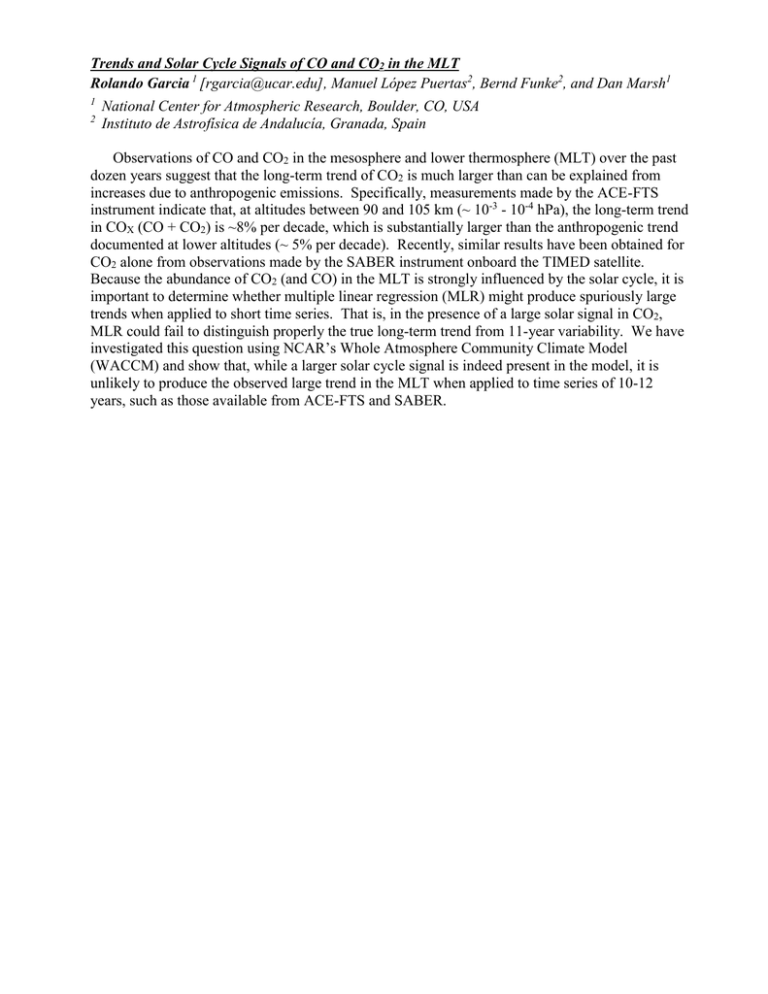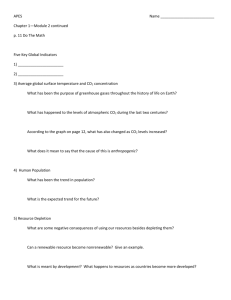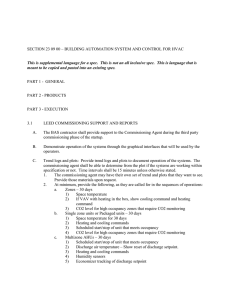Trends and Solar Cycle Signals of CO and CO Rolando Garcia
advertisement

Trends and Solar Cycle Signals of CO and CO2 in the MLT Rolando Garcia 1 [rgarcia@ucar.edu], Manuel López Puertas2, Bernd Funke2, and Dan Marsh1 1 2 National Center for Atmospheric Research, Boulder, CO, USA Instituto de Astrofísica de Andalucía, Granada, Spain Observations of CO and CO2 in the mesosphere and lower thermosphere (MLT) over the past dozen years suggest that the long-term trend of CO2 is much larger than can be explained from increases due to anthropogenic emissions. Specifically, measurements made by the ACE-FTS instrument indicate that, at altitudes between 90 and 105 km (~ 10-3 - 10-4 hPa), the long-term trend in COX (CO + CO2) is ~8% per decade, which is substantially larger than the anthropogenic trend documented at lower altitudes (~ 5% per decade). Recently, similar results have been obtained for CO2 alone from observations made by the SABER instrument onboard the TIMED satellite. Because the abundance of CO2 (and CO) in the MLT is strongly influenced by the solar cycle, it is important to determine whether multiple linear regression (MLR) might produce spuriously large trends when applied to short time series. That is, in the presence of a large solar signal in CO2, MLR could fail to distinguish properly the true long-term trend from 11-year variability. We have investigated this question using NCAR’s Whole Atmosphere Community Climate Model (WACCM) and show that, while a larger solar cycle signal is indeed present in the model, it is unlikely to produce the observed large trend in the MLT when applied to time series of 10-12 years, such as those available from ACE-FTS and SABER.






